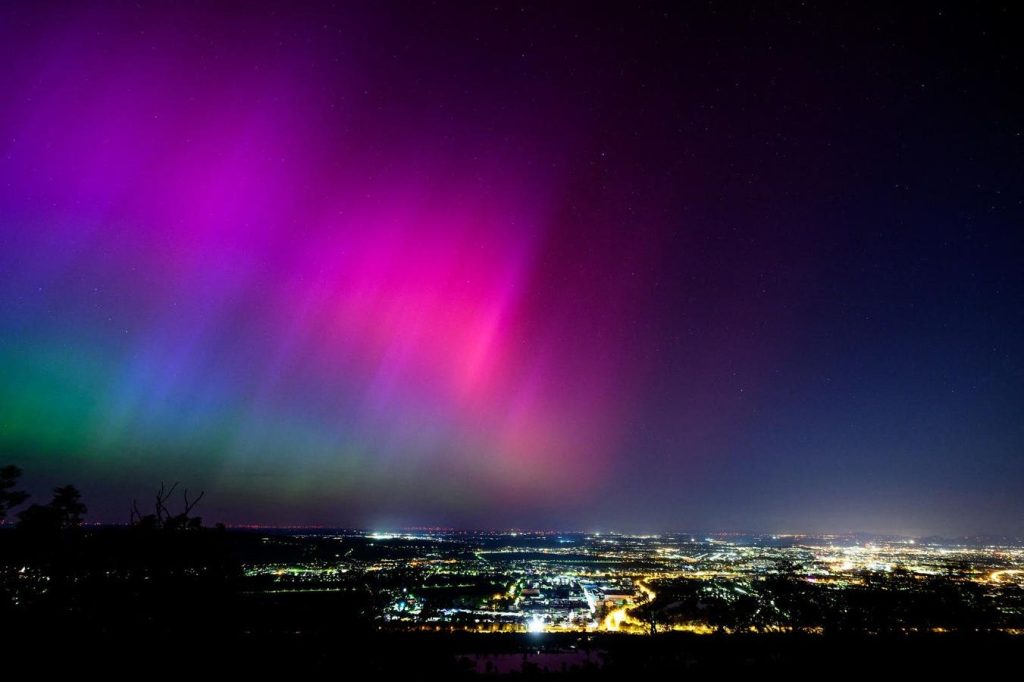The strongest solar flare since 2017 erupted on the sun on Friday, resulting in a spectacular display of aurora on Earth. This solar flare originated from a sunspot region known as 3664, which also produced stunning auroras across the globe throughout Friday and Saturday. Rated as an X5.9-class solar flare, it is expected to lead to more northern lights displays over the weekend.
A solar flare is a powerful burst of radiation from the sun that travels at the speed of light, reaching Earth in just eight minutes. While solar flares can cause radio blackouts, they are not directly responsible for auroras. However, they are related to coronal mass ejections (CMEs), which expel magnetic fields and charged particles into the solar system at speeds of up to 1,900 miles per second. If these CMEs are directed towards Earth, they can trigger geomagnetic storms that produce dazzling northern lights displays.
Dr. Ryan French, a solar physicist at the National Solar Observatory in Colorado, described the recent solar flare as the second biggest since 2017, with an X5.9-class rating. Meanwhile, on Earth, the strongest geomagnetic storm since 2003 was occurring. According to French, this event signifies that the sun is currently approaching “solar maximum,” its peak period of magnetic activity, which is projected to take place this year. Solar physicists rely on algorithms, machine learning, and artificial intelligence to predict the exact timing of solar maximum, but the most accurate method is still counting sunspots on the sun’s surface.
Sunspots are magnetic disturbances on the surface of the sun that can be as large as Earth. They have been observed and counted daily since 1611, providing valuable information on the sun’s activity. Sunspots are the source of solar flares and CMEs, making them crucial for understanding solar phenomena. The recent X5.9-class solar flare and resulting geomagnetic storm highlight the sun’s increasing activity as it approaches the solar maximum phase, leading to stunning displays of aurora around the world.
Solar physicists around the world are closely monitoring the sun’s activity as it approaches the predicted solar maximum phase. The recent X5.9-class solar flare and resulting geomagnetic storm serve as a reminder of the sun’s immense power and impact on Earth. As sunspots continue to be counted daily and data is analyzed, researchers can better understand and predict solar phenomena such as solar flares and CMEs. The stunning displays of aurora following the recent solar flare provide a visual reminder of the sun’s influence on our planet and the ongoing cycle of solar activity.


